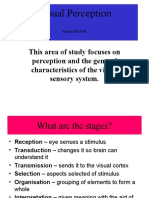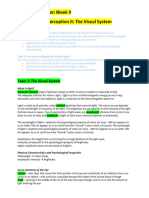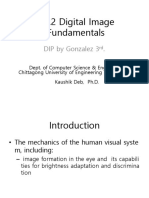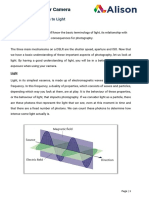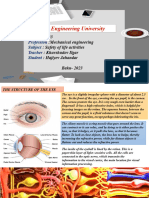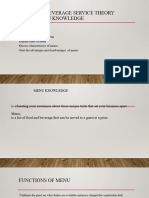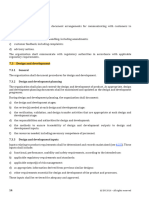0% found this document useful (0 votes)
93 views32 pagesUnderstanding Human Vision Process
The human eye sees images by moving around objects of interest to capture them, and the brain comprehends and stores these images based on both what is seen and what is already in memory. Similarly, objects and people can be recognized from a distance based on stored memories of their structure, shape, and other characteristics. Understanding how the eye functions helps explain how digital cameras and displays aim to achieve similar results through components that mimic those of the eye, such as lenses, sensors that receive light, and memory storage devices. Key aspects of human vision include color reception, adaptation to varying light levels, nonlinear perception of brightness, and sensitivity to contrast over absolute luminance.
Uploaded by
Giri Ratna SinghCopyright
© © All Rights Reserved
We take content rights seriously. If you suspect this is your content, claim it here.
Available Formats
Download as PPT, PDF, TXT or read online on Scribd
0% found this document useful (0 votes)
93 views32 pagesUnderstanding Human Vision Process
The human eye sees images by moving around objects of interest to capture them, and the brain comprehends and stores these images based on both what is seen and what is already in memory. Similarly, objects and people can be recognized from a distance based on stored memories of their structure, shape, and other characteristics. Understanding how the eye functions helps explain how digital cameras and displays aim to achieve similar results through components that mimic those of the eye, such as lenses, sensors that receive light, and memory storage devices. Key aspects of human vision include color reception, adaptation to varying light levels, nonlinear perception of brightness, and sensitivity to contrast over absolute luminance.
Uploaded by
Giri Ratna SinghCopyright
© © All Rights Reserved
We take content rights seriously. If you suspect this is your content, claim it here.
Available Formats
Download as PPT, PDF, TXT or read online on Scribd
/ 32

